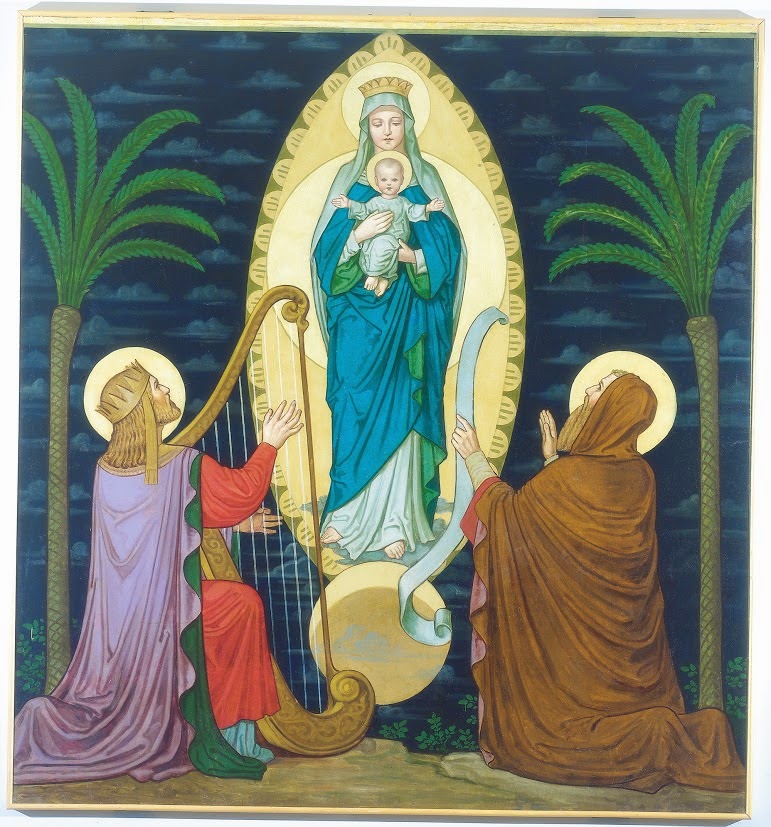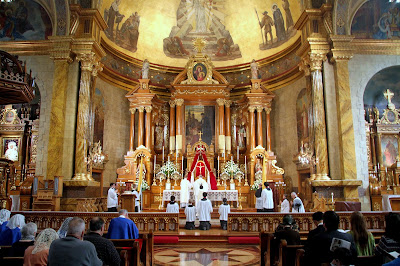Why are we honoring Blessed Karl of Austria? Why celebrate his memory? He’s not a typical saint. He’s not an ascetic or religious, or a great missionary. Why has the Church raised him to her holy altars for veneration?
He was a king—
but don’t be misled by his royalty. The fact that he was royalty was a hindrance, not a help. Often the marriages of royalty are ones where the husband disappears off to conduct business. And how many monarchs had affairs? Bl. Karl never did that. What is unique about his royal marriage is that it seems it was a marriage of love and commonality of mind.
In fact, his royalty made it a lot harder for him. There are few royalty who are canonized. Several queens make the list, but it is threadbare for actual ruling monarchs: St. Louis the King of France, St. Edward the Confessor, St. Wenceslas. Or Bl. Karl’s first predecessor, St. Stephen of Hungary, whose crown Bl. Karl received when he ascended the throne.
Let’s understand the magnitude of that. How many monarchs have there been over the last 2,000 years? So few are canonized—and most monarchs are not worth canonizing. Rather than being saints themselves, often they have made saints by creating martyrs: St. Thomas More, St. John Fisher, St. Stanislaus. “Will no one rid me of this turbulent priest?” was said of St. Thomas Becket. More often monarchs are doing that kind of thing rather than living the kind of life Bl. Karl did.
On top of that, Bl. Karl had a war to conduct. Then, after it was over, he had nothing at all. He had to flee the country.
Why am I, a Juventutem leader, giving this message? Look at Bl. Karl’s youth: he died at age 34 after ascending the throne at age 29. (His wife Zita was 24.) Why is he a model for us? How much devotion, sacrifice, and service he accomplished as a young adult! He worked tirelessly for the Faith in this life and he intercedes for us in the next.
Likewise, it is the young people who will be starting families. We can relate to him on that level. Men, try to model yourselves on what he did. Women, focus on raising such men. There is a way you can relate to this saint even if he was royalty. Raising a family is something he has in common with us regardless of our station in life.
This is when monarchy is at its most effective—when monarchs behave in morally admirable ways. Why was Queen Victoria so beloved? Her moral rectitude. Why is Queen Elizabeth II so popular? You never have to open the papers and wonder if you will find something awful she did.
If a leader is supposed to lead—lead other people—it is hard to expect other people to behave the right way when the leader isn’t living a virtuous life. Their effectiveness is compromised somewhat—and this is true whether you’re the leader of a university, a company, or a lay Catholic group; or you’re a diplomat, in the military, or work for the government. Bl. Karl also studied law and political science in Prague, so let’s not forget lawyers and politicians.
There are plenty of opportunities for us to share in that responsibility that Bl. Karl had. We’re not all kings, but we can relate to him and model ourselves on him. “The emperor always acknowledged his faith publicly. His moral rectitude was above reproach. Georges Clemenceau, the French prime minister, said ‘Emperor Charles in Austria is worth a pope in Central Europe.’”
Why is it so important to honor Bl. Karl? For starters, he was enough a man of our age, within living memory. We have films of him. There are people living—perhaps some of them in this room—who were alive when he was. In some ways he is one of the last survivors of a dying age, the old Europe, that is still around. He was also around for the birth of the new one.
We also honor him for his family life. He was a successful husband and father. How many of our saints are husbands and fathers? Not many. Most saints are vowed religious. There’s nothing wrong with that of course but it’s nice to have a few that are lay faithful. It’s necessary that there be saints who are accessible to us, in our state in life.
The most important reason we honor him is for his heroic virtue, his sanctity of life.
As he told Zita on the eve of their marriage, “Now we must help each other to attain heaven.” Even with professional concerns Bl. Karl focused on his children. When they were very young he would carry them into the chapel, fold their tiny hands, and help them make the Sign of the Cross. He led them in morning and evening prayers. He told them stories of religious history and the life of Christ. He used every opportunity to deepen their faith.
During Advent he encouraged them to multiply their daily sacrifices. For each one they placed a blade of straw in a manger to warm it with charity for the infant Savior’s coming. One of his last prayers was “Dear Savior, protect our children. Take care of them in body and soul. Let them rather die than commit a mortal sin. Thy will be done. Amen.”
For what purpose has God given you an eternal soul but for you to become a saint? 1. Prayer and living a holy life are the most important things we do.In cathedrals and at improvised altars on battlefields Bl. Karl’s recollection during Mass inspired everyone around him. After Mass he prayed the
Veni Creator Spiritus, begging the Holy Ghost to help him with the difficult decisions of his life. He ended every day by singing the
Te Deum. “If we receive with thankfulness all the good things from God,” he said, “how much more should we receive even the most painful things with thankfulness.”
2. Make the resolution to give yourself entirely to God. On Bl. Karl’s tomb it says,
Fiat voluntas tua, thy will be done. In his own words, “My entire effort is always, in all things, to discern the Will of God as clearly as possible, and to obey it, indeed, even to perfection.”
3. Charity is how we make reparation for our sins. Love the cross and suffering. Make personal sacrifices. “War brought hunger, misery, and death to his people. Bl. Karl and his family went through the same hardships. He organized soup kitchens, used the court’s horses to deliver firewood in Vienna because of the intense winter cold. … He and his family obeyed rationing rules and forbade the use of white bread in his household, ordering it to be given to the sick and the wounded. Soldiers said that food was better on the warfront than in the emperor’s home.”
4. Encourage your neighbor in all that is good, and gently draw him away from anything that is bad.Bl. Karl arranged for the troops to attend Mass and receive the sacraments as often as possible. He provided them with wholesome reading material and recreation centers to discourage immorality during their free time. If he heard that a soldier was falling into sin in a certain place, he would have him transferred somewhere else.
Juventutem DC exists for the sanctification of youth united in the Catholic Faith and expressed by a love of the Church’s traditional liturgies and spiritual formation, particularly spiritual and corporal works of mercy. These are expressions of the Faith that would have been familiar to Bl. Karl. In fact the form of Mass we attended tonight was the only that he, or most all saints, ever knew. On behalf of the DC and Michigan chapters we hope to see you, young and old, at our March for Life Juventutem Mass and social.
The words that close Psalm 22, the one Our Lord began from the cross in his dying moments, may be fittingly said by Bl. Karl: “To the Lord royalty belongs, the whole world’s homage is his due. Him shall they worship, him only, that are laid to rest in the earth, even from their dust they shall adore. I, too, shall live on in his presence, and beget children to serve him; these to a later age shall speak of the Lord’s name; these to a race that must yet be born shall tell the story of his faithfulness, hear what the Lord did.”
Bl. Karl wore many hats: king, emperor, husband and father in very difficult circumstances. He had so many more demands than we do, and then lived in poverty in exile with only the clothes on his back. That’s a very hard thing to do—and yet he never wavered, never shook from his purpose. His entire life was a great tragedy, and yet it was a great victory too. He never lost his faith and he passed it on to his children. He was steadfast to the end and led an exemplary life. Now he can intercede for us in heaven, as his children.
Blessed Karl, Emperor of Austria, and Servant of God Empress Zita, pray for us. 

.jpg)




.jpg)
.jpg)


.jpg)
.jpg)
.jpg)
.jpg)
.jpg)































